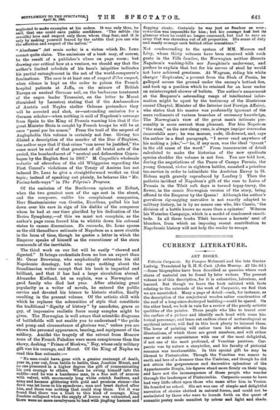C URRENT LITE RAT UR. E.
ART BOOKS.
Vittorio Carpaccio. By Pompeo Molmenti and the late Gustav Ludwig. Translated by R. H. H. Cast. (John Murray. ..432 12s. (3d.) —Some biographies have been described as quarries where vast stores of material can be found by later writers. The present volume is of this description, for it is exhaustive, laborious, and learned. But though we leave the book satiated with facts relating to the externals of the work of Carpaccio, we feel that we are unsatisfied. Many a page of detail—such, for instance, as the description of the conjectural wooden rafter construction of the roof of a long-since-destroyed building—could be spared. On the other hand, we look in vain for a review of the purely artistic qualities of the painter. Those people who like to travel over the surface of a picture and identify each head with some his- torical personage, and trace out endless clues of archaeological or mythical interest, will find in this book plenty to interest them. The lover of painting will rather turn his attention to the illustrations, of which there are great numbers, and will either renew or make acquaintance with one of the most delightful, if not one of the most profound, of Venetian painters. Car- paccio was by nature a storyteller, and his faculty of pictorial romance was inexhaustible. In this special gift he may be likened to Pinturicellio. Though, the Venetian was nearer to earth and less of a dreamer than the Umbrian, and though he did not attain the gorgeousness and decorative splendour of the Appartamento Borgia, his figures stand more firmly on their lege, and have not the inconsequence of those people who wander through the landscapes of Pinturic,chio. Carpaccio seems to have had very little effect upon those who came after him in Venice. lie founded no school. His art was one of simple and delightful narration of stories clothed in natural forms, and could not be assimilated by those who were to launch forth on the quest of romantic poetry made manifest by colour and light and shade.
The even daylight of the St. Ursula series was of no use to the creators of the Idyll of Giorgione and-the Poesia of Titian.























































 Previous page
Previous page